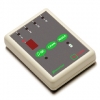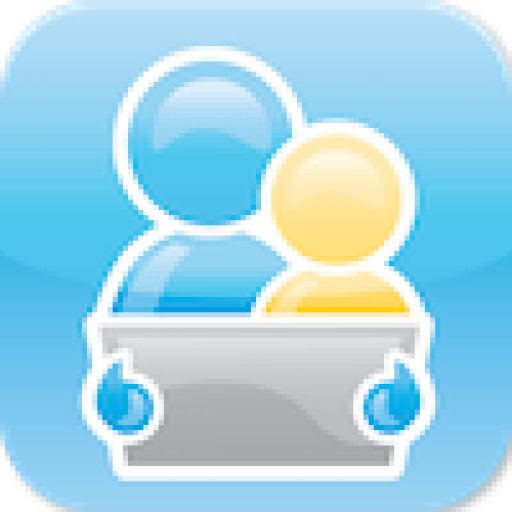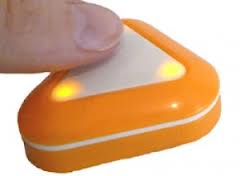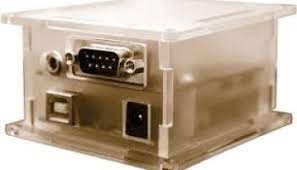This blog post has been updated. Please see the new entry at http://www.janefarrall.com/blog/2013/09/29/how-do-i-use-a-switch-with-an-ipad-ios-7-overview/
There have been some very positive changes towards more comprehensive switch access to the iPad recently – so I thought it was time for an updated blog entry on this topic!
And before I start on this topic in earnest, I just want to quickly explain that when I talk about switch access, I specifically mean an external switch that someone can press to make a selection in the app running on an iPad or iPhone (or an app which allows me to use the iPad screen as a switch). Switches come in all different shapes and sizes. To read more about switches and switch access click here.
Currently, there are two options for switch access to an iPad – you can either purchase specific apps that have been created to be switch accessible or you can look at a more comprehensive switch access option.
There is only one of the more comprehensive switch access options to the iPad available today – the Tecla Shield. I reviewed this recently – so you can read more about it at “Tecla Shield for iPhone and iPad – adding greater switch access to iOS“. This still doesn’t offer complete switch access to the iPad – the major limitation is that it only works with apps that have VoiceOver compatibility. Currently, this is a limited set of apps – and, as Luis Perez comments in his blog, we ALL need to advocate for more apps to be VoiceOver compatible so that ALL iPad users can benefit. It is also worth noting that the Tecla Shield doesn’t follow typical 1 and 2 switch scanning conventions – and for more information about that please see my blog entry about the interface.
In addition to the Tecla Shield, other switch access options that will offer more comprehensive access to the iPad are coming out soon. These include SimplyWorks for iPad from Pretorian (due this week), the Switch2Scan from Pretorian (due in July) and the Keynote from Ablenet (edited to add: this has been discontinued). These promise to use a combination of VoiceOver and the new AssistiveTouch feature in iOS5 to add switch access to the iPad. This combination of accessibility features may lead to options for a greater number of Apps and I really look forward to checking these out.
And as I mentioned earlier, there are also a range of apps that have been made switch accessible by their developers. These work with a different group of switch interfaces and may be an easier option for some users to master – but these options don’t allow the user to move from app to app – switch access is in-app only.
For these apps, you also need to have an iPad switch interface – and this is a different set of switch interfaces to the ones mentioned above. Currently, there are Bluetooth switch interfaces available which work with these switch accessible apps. It is worth noting that Bluetooth switch interfaces will reduce the iPad’s battery life and also may ‘lose’ the Bluetooth connection intermittently. Some people find this to be a problem, but others don’t. This also applies to the Tecla Shield mentioned above.
RJ Cooper has two different iPad switch interfaces available that work with switch accessible apps. The Bluetooth Super Switch (edited to add: product discontinued) connects to the iPad via Bluetooth as the name implies! The interface itself functions as a switch and there is also a switch port to connect a second switch. The interface is rechargeable from any USB port.
The Air-Turn BT-105 is a small interface with two switch ports – allowing the user to connect one or two switches. This also connects via Bluetooth and is marketed as the Bluetooth Switch Interface by RJ Cooper and as the SwitchBox by Therapy Box.This interface is also rechargeable from any USB port. (edited to add: this has also been discontinued).
The Blue2 from AbleNet is the third Bluetooth option. This interface has two inbuilt switches (in the form of the two pedals on the front) and also has two switch ports which can replace the two pedals. This interface requires 2AA batteries to run – which works better for some people than recharging – and the batteries have a long run time. (edited to add: this has also been discontinued).
Each of these switch interfaces works with only some of the switch accessible apps available.
The APPlicator from Pretorian is yet another Bluetooth switch interface option for switch accessible apps – but is different from the others in that is compatible with ALL of the switch accessible apps currently available. It also has some other interesting functions – and I have reviewed this in the blog post entitled “The APPlicator – switch access to MORE apps and music too!“.

Now that I’ve covered, the different switch interfaces available, the next question is generally – so which Apps can I use? To help with this question, Alex Dunn from Inclusioneers and I put together a Switch Accessible Apps resource. (edited to add: this list has been discontinued). The resource lists all the apps that we are currently aware of that have switch access, details the type of switch access (e.g. cause and effect, 1 switch scanning, 2 switch scanning, visual scanning, auditory scanning) and also lists which switch interface(s) the App is compatible with. Alex and I are working on keeping this updated – so if you find any Apps missing or have any comments please let us know!
I hope you’ve found this helpful. I am amazed how much has changed since I first blogged about this topic – but I’m also delighted with the change as it means that more options are coming which hopefully will suit more people.




Pingback: How do I use a switch with an iPad? | Jane's Blog
Ajit
Jane
Ajit
Jane
RJ Cooper
Carol Leynse Harpold
Jane
Pingback: Switch Access and the iPad – Get the Scoop from Jane Farrall « AT 4 Education Blog
Pingback: What’s APPropriate: AAC Apps for iPhones, iPads and other devices | Jane's Blog
Pingback: Switch2Scan – switch access to Apps, iOS and more | Jane's Blog
Kristine
Jane
Pingback: Switch2Scan – switch access to Apps, iOS and more | Jane Farrall Consulting